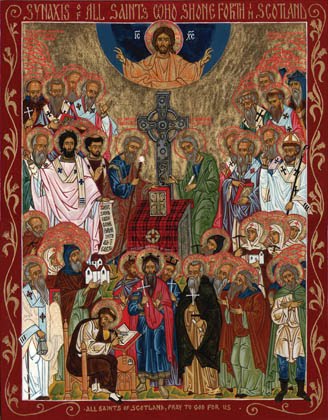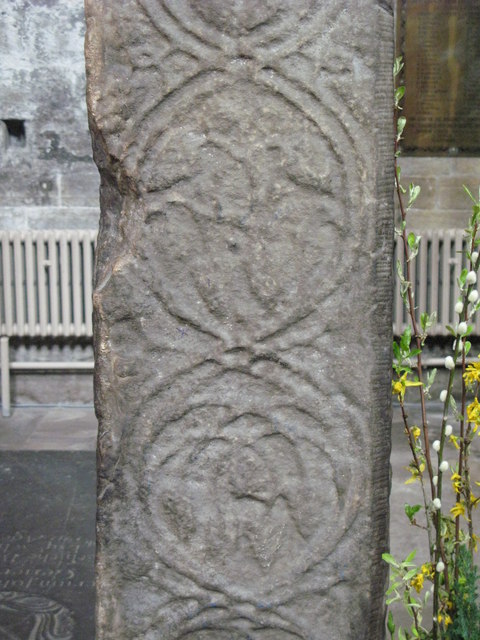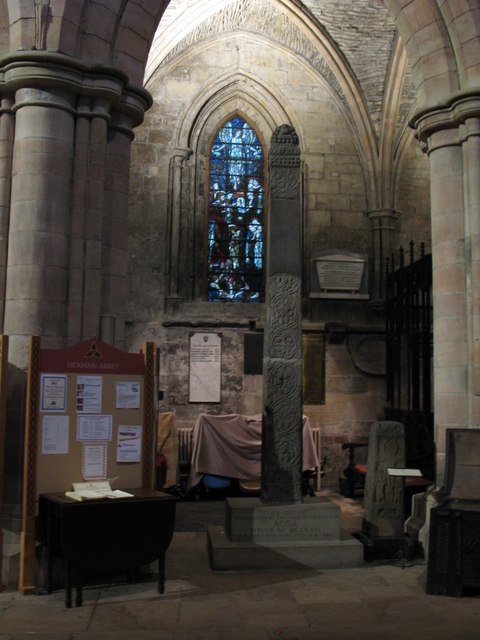There are days now, when I wish that I had been able to recognize that the Anglican house was no longer inclusive
enough to find room for orthodox Christians. It would take me another 18 years before it became clear that I truly no longer had a place at the family table in the Anglican Communion, which had been the very place where I had been formed as an orthodox Christian.
In my case, I fell victim to an Episcopalian bishop who totally ignored the Eames Commission, Lambeth pronouncements and the so-called conscience clause by trying to force me to stand with a woman priest
to renew ordination vows. This action was not long after his promise not to force the issue with his clergy who held theological objections to female ordinations.
The scene was set at the 1993 Convention of the Episcopal Diocese of Western Kansas, meeting in Dodge City (a great place for a show-down). When Canon Joseph Kimmett and I failed to show for the renewal of vows with the woman priest,
we were charged with breaking communion with our bishop and the rest of the diocese.
This is a serious charge by the bishop, who admitted that no canons had been violated, but his own rules had been broken! Faced with this charge, Canon Kimmett and I found ourselves alone, with absolutely no support from the small group of orthodox bishops who were left in PECUSA. I had watched this sort of thing happen, time and time again. My family and I now knew that we would soon be joining the ever growing list of orthodox Anglicans who were being forced from their ecclesiastical home. We were truly victims of the PECUSA policy of ethnic cleansing
!
When your house is on fire, you have a moral obligation to warn as many as possible who are in the house with you, but you do not have a moral obligation to stay with those who refuse to leave and to burn up with them! The question was which road would we walk? Like most traditionalist Anglicans, I had been checking out my options.
I had watched the pitiful hissing and fighting within the Continuing Anglican churches for years. I had come to the conclusion that the main vocation of these various groups was to serve a kind of chaplaincy to small elderly congregations. I had admired Bishop A. Donald Davies for his courage in starting the Episcopal Missionary Church, but again, for a younger priest, this body was a cul-de-sac.
The real issue was becoming more and more clear for me. It was really an ecclesiastical issue. I wanted to be, without any debate, a member of the Church of the Apostles. The curse of Henry VIII had become active and I had to admit, with much regret, that Anglicanism is now and always had been a Protestant Church
1.
Rome has been the answer for many former Anglicans who have reached an understanding of this truth about our Anglican heritage. There are many who have walked in the footsteps of Cardinal John Henry Newman, and the 11 November 1992 vote in the General Synod of the Church of England to approve the ordination of women is converting this steady stream into a fast flowing river. Recent converts include Charles Moore, the editor of The Sunday Telegram, the Duchess of Kent, author and priest William Oddie and, of course, the most senior prelate ever to have left the Church of England, Graham Leonard, sometime Bishop of London. Surely then, this is the logical road to walk for people who, according to the
branch theory,
are part of the Western Catholic Church
2? Personally speaking, as a former member of the Society of the Holy Cross, re-union with Rome was a formal part of the rule of life which I faithfully lived.
I had learned from Archbishop Michael Ramsey that the Anglican Communion was
provisional
by nature. I had heard the 102nd Archbishop of Canterbury, Robert Runcie, say that
our vocation as Anglicans was to put ourselves out of business3.
We were a part seeking to be united with the whole.
The efforts towards corporate re-union in the last century, under the leadership of Lord Halifax and the Malines Conversations, were a rightful inheritance. In our own time we watched our hopes rise and fall with the Anglican/Roman Catholic International Commission. The work of ARCIC is now dead. The Pope has made it clear that the ordination of women is a most serious obstacle to re-union, calling it a new and insuperable barrier to Christian unity.
So, why did I not walk the Newman path
to Rome? Why did I not take the Pastoral Provision for married clergy, now provided by the Vatican? Surely, Episcopal laity would feel more at home in the Roman liturgy, when comparing it to the Byzantine Rite, now used by my convert laity?
When wrestling with these questions, I was often reminded of the old Anglican cure for Roman Fever.
The cure was always simply to attend a Roman Mass! Post Vatican II Catholicism has a liturgical style, which most Anglicans find simply dull and uninspiring. I too was reminded of something a priest friend often said, which was: I liked Rome better when Rome didn’t like us!
Those Anglicans looking to join the Church of Rome need to remember that the much touted book Ungodly Rage was written not about the state of The Episcopal Church, but of the Roman Catholic Church
4. While exploring the Roman Church, with my own ears I had heard radical nuns invoking Sophia and the Mother God. Time and again, in theological conversation with Roman Catholics, priests, nuns and laity, I would find myself defending the Pope and Cardinal Ratzinger! Did I want to spend the rest of my life doing what I have been doing in The Episcopal Church, only in a larger circle?
As I contemplated my concern that a jump to Rome was from the fat to the fire, I was reminded of a saying from the Eastern Orthodox Church—
Rome is simply the flip-side of the Protestant coin.
It seems to me, and many others, that Rome is experiencing a re-discovery of the Protestant Reformation with people like Archbishop Weakland of Milwaukee, Anna Quindlen, Rosemary Radford-Reuther and Richard McBrien leading the charge much like a new vision
5 of Luther, Calvin, Zwingli, and Cranmer!
I remember one Roman priest telling me that Anglo-Catholics were medievalists caught in a time warp.
My own Anglican theological formation by-passed the Council of Trent, looking for roots in the Fathers and the Ecumenical Councils. Being a Patristics man
was far more natural for an Anglican than to be a medievalist.
I had to remember that the Western Patriarchy, the Papacy, has been in schism since 1054. Any Church historian can tell you that the vote at the time of the Great Schism was four to one. If schism is sin, as several Episcopalian bishops have told me, then the Western Church has been in this sin for nearly a thousand years!
In 1992, I was asked to present a paper at the special convocation marking the 150th Anniversary of Nashotah House Seminary. The focus of this paper centered on two great bishops, Charles Chapman Grafton and the newly canonized St. Tikhon of Moscow. Grafton was deceiving to the eye. He looked every inch a Roman prelate, but to read his theology is to find a strong anti-Roman strain of thought. Grafton wrote that in times of theological confusion it is natural for Anglicans to turn to the East to find our way. Both Grafton and St. Tikhon shared a common vision of Anglican/Orthodox unity in the Faith, but Grafton had few fellow Anglicans who shared his vision.
There were, and still are, a handful of great Anglican bishops who professed that a strong East wind had affected their own theological thought. Men like Michael Ramsey, Robert Terwilliger and Stanley Atkins come quickly to mind. Canon H. Boone Porter, writing in a forum published in
The Evangelical Catholic wrote:
…the Eastern Churches embody many of the unachieved goals of Anglicanism6
; I believe that the great Anglican bishops have known this to be true.
Orthodoxy is not strange and foreign reading for classical Anglicans. Father Carl Bell (now Father Anthony Bell, an Orthodox priest), again writing in the options forum in The Evangelical Catholic, makes a strong case showing that the
Anglican way
and the
Orthodox way
are one and the same with the appeal to Sacred Scripture and Holy Tradition. Orthodoxy is the best of classical Anglicanism preserved in our day, with an unquestioned link to the Apostolic Church
7.
Anglicans have sought the stamp of approval and validity from the Orthodox Church, almost from the very beginning of the Church of England. Great progress was made, especially in the early part of this century, but, as with Rome, our own actions dashed any formal Orthodox recognition of Anglican validity
8.
Modern Orthodox theologians had become an anchor for so many orthodox Anglicans, and I was no exception. Lossky, Schmemann, Meyendorff and Hopko are only a few of the Orthodox theologians quoted often in traditionalist Episcopalian circles. I cannot count the number of times I have heard traditionalists repeat how much they felt at home reading Orthodox theologians but they could never become Orthodox because the Byzantine Rite was just too exotic!
There was a time when I would also nod my head in an understanding gesture when this kind of comment was made, so I expect many doubters when I now, in all honesty, after six months as an Eastern Rite priest, write what follows. I understand your concerns, but I can tell you that the Liturgies of St. John Chrysostom and St. Basil no longer seem complicated and long. They are now exciting and re-newing. Having made a choice between the modern Roman Rite, formal BCP worship, and the Byzantine Rite, I am now delighted and thankful to worship with the Fathers. Orthodoxy is right belief and right worship.
As a married priest, my wife and family also had to look at options. The Roman Pastoral Provision would have made my wife an
exception.
She is, indeed, exceptional, but she is not an exception! That she is a vital part of my life and ministry is fully understood in Orthodoxy. In the Orthodox tradition the priest’s wife is, in fact, highly exalted. My wife is learning the wonderful role of being the
Khouria9. So often the married Anglican priest who takes the Pastoral Provision is not given a parish. In Orthodoxy, parish priests are normally married.
Children are also normative in Orthodox clergy families and what a joy it is to see the high priority that young people have in the Orthodox Church. My eldest son was excluded from Episcopalian campus activities due to his conservative Christian views. He found the Roman campus ministry just as secularized and strange as Canterbury House. The only difference was that it was so much bigger. Now, as an Orthodox student, he finds that he is in complete theological harmony with his fellow Orthodox students and faculty. He is, in fact, the President of the University of Kansas Orthodox Student Fellowship, which is a far cry from the reception he got in the other places. In Orthodoxy I no longer worry about what my children will experience or be taught when they attend a church function away from their own parish. I could not say the same if we were part of the Roman Catholic Church. Who can guess what strange ideas Roman nuns promote these days at Catholic Youth events?
In a reflection paper, written by Fr. Peter Geldard, former General-Secretary of the English Church Union, three questions are put to Anglicans who are looking at their options. They are as follows:
Does the Church in which I wish to be sustained guarantee me the continual grace and comfort of the sacraments as they were instituted by Christ?
Does my choice work for the building-up and the unity of the Church or its further disintegration?
Is it a Church into which I wish to inculcate my children and grand-children because I am convinced of its future and its ability to convert our nation
10?
In Holy Orthodoxy I can give a most vigorous Yes!
to each of these questions. I could not give the same response if I were part of the current American Roman Catholic scene. In the Roman Church, I would still be defending the Church of God. I would be finding like minded groups striving to be the Church within the Church.
As a member of the Orthodox Church, I no longer defend the Church; She defends me.
 quixotically gave it to a beggar soliciting alms. Oswin was angry until, as Bede recounts, Aidan asked if the son of a mare was more precious to the king than a son of God. Oswin sought Aidan's pardon, and promised never again to question or regret any of his wealth being given away to children of God. Both Oswald and Oswin are venerated in England as saints and martyrs.
quixotically gave it to a beggar soliciting alms. Oswin was angry until, as Bede recounts, Aidan asked if the son of a mare was more precious to the king than a son of God. Oswin sought Aidan's pardon, and promised never again to question or regret any of his wealth being given away to children of God. Both Oswald and Oswin are venerated in England as saints and martyrs. quixotically gave it to a beggar soliciting alms. Oswin was angry until, as Bede recounts, Aidan asked if the son of a mare was more precious to the king than a son of God. Oswin sought Aidan's pardon, and promised never again to question or regret any of his wealth being given away to children of God. Both Oswald and Oswin are venerated in England as saints and martyrs.
quixotically gave it to a beggar soliciting alms. Oswin was angry until, as Bede recounts, Aidan asked if the son of a mare was more precious to the king than a son of God. Oswin sought Aidan's pardon, and promised never again to question or regret any of his wealth being given away to children of God. Both Oswald and Oswin are venerated in England as saints and martyrs.







